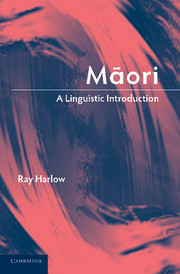Parts of Speech
As in all languages, the words of Māori do not all behave the same way either morphologically or syntactically; there are word classes, grouping together those items which share privileges of occurrence and/or can undergo the same morphological processes. On this, all writers on Māori would agree, but from that point on there is a bewildering diversity in the analyses proposed. This state of affairs is partly due to the range of paradigms within which descriptions of Māori have been composed. Partly, however, it is due to the fact that in Māori, as also in other Polynesian languages, there is relatively little in the way of inflectional morphology which would contribute to class assignment, while very many lexical items can appear systematically in a variety of syntactic environments.
To take the former point first, ‘prior to 1960, all published grammars of Polynesian languages were “traditional” grammars, sometimes referred to as Latinate’ (Mutu 1989:399). While this brief summary glosses over some useful discussion by earlier individual writers, it is essentially correct in that early accounts of, say, Māori grammar rely heavily and largely uncritically on the parts of speech, and the criteria for assignment of words to them, familiar from traditional European grammars. Even Maunsell (1842), who ‘would … insist in reply to those who would bind him down to the model of some of the European grammars, that Maori, like Hebrew, is altogether different from those languages in structure’ (1842:xii), uses noun, adjective, verb, adverb and preposition as the categories under which he discusses morphology and syntax.




